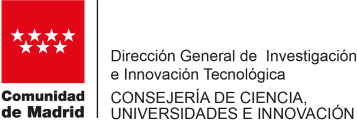Support
SPAchip® FAQS
What about next generation of SPAchip® products?
A4Cell R&D team is working to expand the application portfolio to increase the multiplexing possibilities with up to 9 different molecules, which can include different kind of molecules (fluorophores, nucleotides, proteins, etc) to enhance current assay possibilities.
We have carried out proof-of-concept studies, where we have been able to functionalize SPAchip® with aptamers and oligonucleotides to target proteins and mRNA sequences. We are currently optimizing these assays to provide dynamic, reversible and robust measurements of the specific targets.
Next generation of SPAchip® devices for live-cell analysis will be also multiplexed with antibodies to target specific organelles to identify analyte values in determined subcellular regions.
Can SPAchip be used for other applications than live-cell analysis?
We are committed to excellence in innovation and research and we want to take advantage of SPAchip® possibilities to explore other areas in the biomedical sector, such as Delivery of molecules for therapeutic applications or diagnostics to detect biomarkers in clinical samples.
How are SPAchips internalized?
After addition and incubation of SPAchip® solution to the culture, cells endocytose the SPAchip® in their cytosol being in direct contact with the cytosol fluid and allowing direct measurement of intracellular analytes. The specific SPAchip® endocytic mechanism will be provided soon
How is SPAchip® uptake controlled?
SPAchip® size (3x3x1 µm3) and geometry have been optimized to avoid cytotoxicity while yielding an optimal uptake ratio (it represents less than 1% of a standard cell volume), although internalization is cell type dependent. We suggest adding a 2:1 SPAchip®:cell ratio at the measurement time point, but optimization may be required. By adding the suggested ratio to the culture, most of the cells show only 1 SPAchip® in the cell cytosol, although there can be cells which have uptaken more than 1 SPAchip®. Greatly increasing the SPAchip®:cell ratio will not offer a significantly higher value of SPAchip®-positive cells, however there will most likely be a higher distribution of cells with more than 1 internalized SPAchip®.
Which cells are suitable for SPAchip® analysis?
At A4Cell we have validated SPAchip® use in more than 20 different cell lines and primary cultures, including some of the most frequent cells used in screening (e.g. HeLa, CHO, HEK 293T, Hepatocytes). Adherent and suspension cells have also been validated, both from primary origin and immortalized lines. Until now, all cell lines tested have been proven to internalize SPAchips in their cytosol and our team is continuously working on expanding the applications portfolio including different cell models.
SPAchip® internalization rates are variable across cell lines. An average of 25-40% cells with positive SPAchip® internalization has been observed in different cell lines, ranging from >95% internalization in macrophages to ~10% in 3T3 cell. These values should be enough to perform statistical analyses between study conditions in classical multiwell plate setups.
Regarding SPAchip® use in vivo, we have not data yet, but it will be provided soon.
How are SPAchip® distributed in the cell culture?
SPAchip® intracellular distribution is always cytosolic and no specific subcellular location has been identified. Adherent cells usually show SPAchip® near the plasma membrane in 2D cultures, likely due to their flat shape. SPAchip® have never been seen inside the cell nucleus, nor being ejected to the extracellular medium after internalization.
Remaining SPAchip® in the extracellular medium can be subject to cell internalization after incubation. However, a unique feature of SPAchip® devices is given by the fact that these extracellular SPAchip® can be identified as a different population, either by fluorescence microscopy or flow cytometry, to simultaneously obtain intra and extracellular values of the analyte of interest.
Why is cellular viability important?
SPAchip® are made of silicon oxide, an inert material, which allows to maintain cellular viability offering absence of cytotoxicity. Fluorescent probes used as sensors in SPAchip® are covalently bond to the surface to avoid degradation and release to the intracellular environment. The small quantity of fluorescent probes also reduces the interaction with the whole analyte levels increasing the physiological resemblance in the cell model.
Are SPAchip® measurements dynamic?
SPAchip® are continuously detecting changes in the analyte levels in the cytosol offering dynamic, real-time measurements by changes in the fluorescence intensity. Compared to traditional end-point assays, SPAchip® are advantageous because preparation of multiple samples to analyze different time points become unnecessary, thus saving time and resources. Additionally, the possibility of monitoring samples over time allows to keep track of drug responses, differentiation processes or cell trajectories, which could not be precisely assessed otherwise.SPAchip® are made of silicon oxide, an inert material, which allows to maintain cellular viability offering absence of cytotoxicity. Fluorescent probes used as sensors in SPAchip® are covalently bond to the surface to avoid degradation and release to the intracellular environment. The small quantity of fluorescent probes also reduces the interaction with the whole analyte levels increasing the physiological resemblance in the cell model.
Does SPAchip® Assay Buffer affect cell culture?
SPAchip® Assay Buffer contains a saline solution with physiological pH and osmolarity to maintain the conditions of standard culture media. It is provided to dissolve the solid film where Assay SPAchip® are contained and wash them to remove it. Additionally, SPAchip® solution is needed to be further diluted in cell culture media to avoid any possible interaction with the culture, as stated in the SPAchip® kit protocol.
How long can be SPAchip® be incubated with the cell culture?
Lack of cytotoxicity offered by SPAchip® devices make them suitable for their use in cell assays that require extended culture time, such as delayed drug responses, differentiation processes, bioproduction, etc. Our team has been able to keep cells in culture for 1 month after SPAchip® addition, while keep cell viability and SPAchip® fluorescence signal.
On the contrary, the minimum suggested cell incubation with SPAchip® is overnight. SPAchip® uptake has been seen to happen after 1h in some cell types, however an overnight incubation is recommended to obtain optimal results.
What happens to SPAchip® upon cell division?
SPAchip® are solid devices, thus they do not follow cell growth over time. For this reason, upon cell division only one of the daughter cells keep the SPAchip® in its cytosol, hence SPAchip®-to-cell ratio should be designed according to the expected cell number/confluency.
What are the analysis techniques used to obtain SPAchip readouts?
SPAchip® kits have been designed to work with fluorescence signals as the primary readout, where a change in the SPAchip® fluorescence intensity correlates with an increase/decrease in the analyte levels. Specific control conditions need to be included in the assay to obtain quantitative data.
The main instruments to analyze SPAchip® readouts are fluorescence microscopes and flow cytometers. Microplate readers are not a suitable option for SPAchip® analysis due to their whole well scanning process, as it does not allow resolving such small volumes.
Excitation and emission wavelengths are specified in each SPAchip® kit protocol.
How fast can SPAchip® detect analyte changes?
Video recording can be performed to analyze fast occurring analyte fluxes in the cell cytoplasm with sub-second frequency when imaging SPAchip® samples
What fluorescence channels are available for SPAchip® kits?
We have CytoCHECK SPAchip® single-detection kits for measuring pH and Calcium in standard GFP/FITC channel.
We will be expanding our portfolio of products soon to offer novel applications and fluorescence wavelengths
What is the required imaging resolution for SPAchip analysis by microscopy?
To identify single-detection SPAchip® where the fluorescence signal covers the whole device surface (3×3 um2) a magnification of at least 20x is required to identify the objects in the subcellular environment. Higher magnification will yield improved results.
Image analysis software and pipelines are suggested to be used in order to identify different objects and subcellular structures. If you require assistance, please contact A4Cell Team.
Can SPAchip® devices be affected by photobleaching?
As any other fluorophore, SPAchip® can be subject of photobleaching effect. However, our devices have been optimized to suffer a mild decay in the fluorescence signal (<20%) after continuous and intensive laser exposure (1h, 13 cycles), with all calibration conditions maintaining significant differences in intensity.
Are SPAchip® compatible with other assays?
SPAchip® can be used with any other fluorescent readouts, including stainings, engineered cell lines, cell painting approaches, etc. Excitation and emission wavelengths need to be considered to avoid undesired signal overlap. Please contact A4Cell if you need support to design your panel.
Which are the storage conditions?
SPAchips have been tested to be stable for at least 6 months. It is recommended that the kits are refrigerated (4 ºC) upon reception and protect them from light.
Assay SPAchip® tube can be also stored for at least 6 months at 4 ºC and protected from light after dilution in the Assay Buffer provided with the kit.
How can you ensure that SPAchip resuspension has been performed properly?
We recommend counting SPAchips in a Neubauer chamber previously at the ASSAY PROTOCOL step (check the detailed Assay Procedure in the Full User Protocol). Check SPAchip® count using a routine brightfield microscope. If Neubauer chamber is not available, add a drop in a slide and check for the visualization of SPAchips using a routine brightfield microscope.
What about next generation of SPAchip® products?
A4Cell R&D team is working to expand the application portfolio to increase the multiplexing possibilities with up to 9 different molecules, which can include different kind of molecules (fluorophores, nucleotides, proteins, etc) to enhance current assay possibilities.
We have carried out proof-of-concept studies, where we have been able to functionalize SPAchip® with aptamers and oligonucleotides to target proteins and mRNA sequences. We are currently optimizing these assays to provide dynamic, reversible and robust measurements of the specific targets.
Next generation of SPAchip® devices for live-cell analysis will be also multiplexed with antibodies to target specific organelles to identify analyte values in determined subcellular regions.
Can SPAchip be used for other applications than live-cell analysis?
We are committed to excellence in innovation and research and we want to take advantage of SPAchip® possibilities to explore other areas in the biomedical sector, such as Delivery of molecules for therapeutic applications or diagnostics to detect biomarkers in clinical samples.
Like an eye
in the cell!
What would you use SPAchip® technology for?
Tell us and help understanding and developing our product






